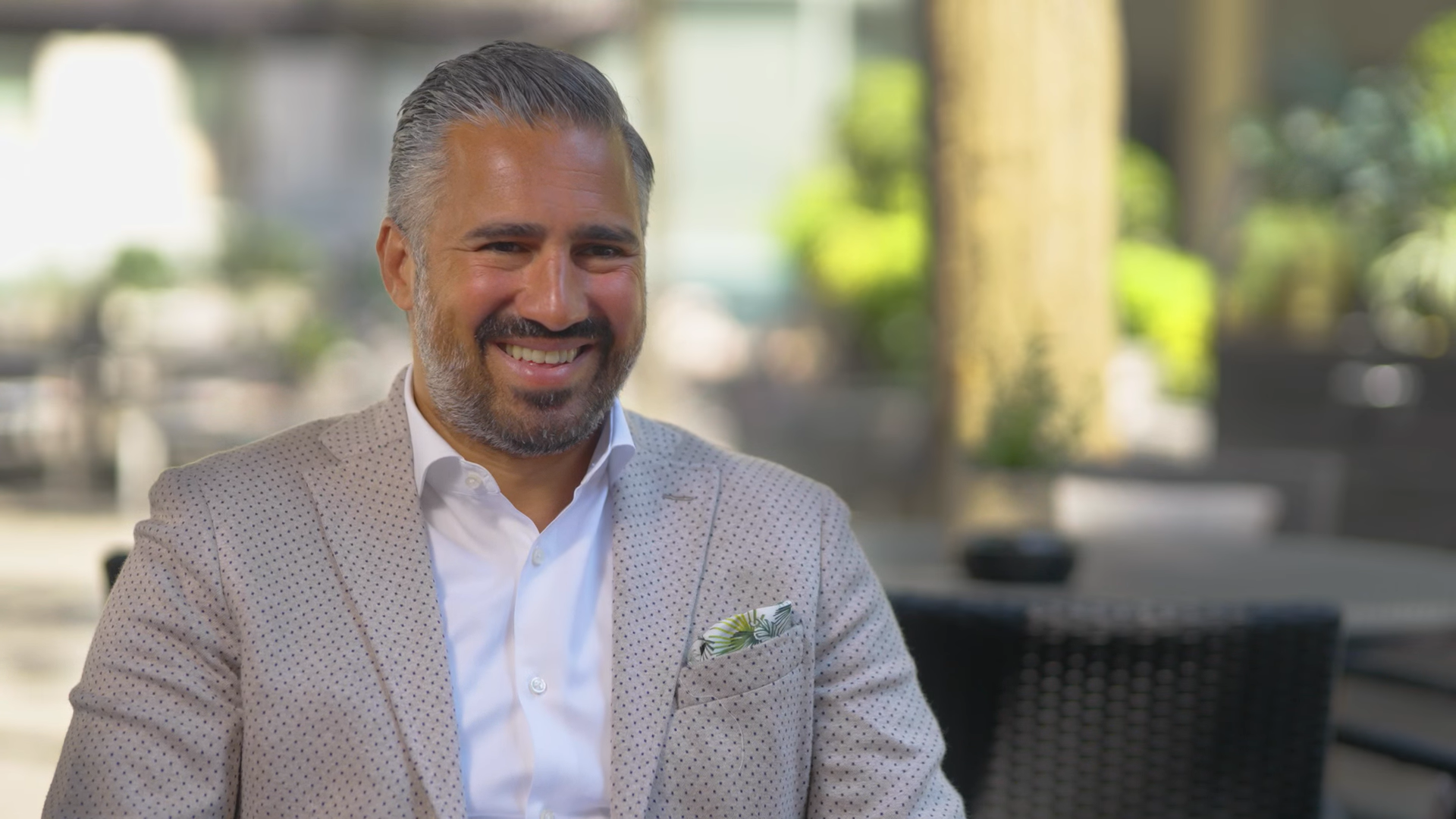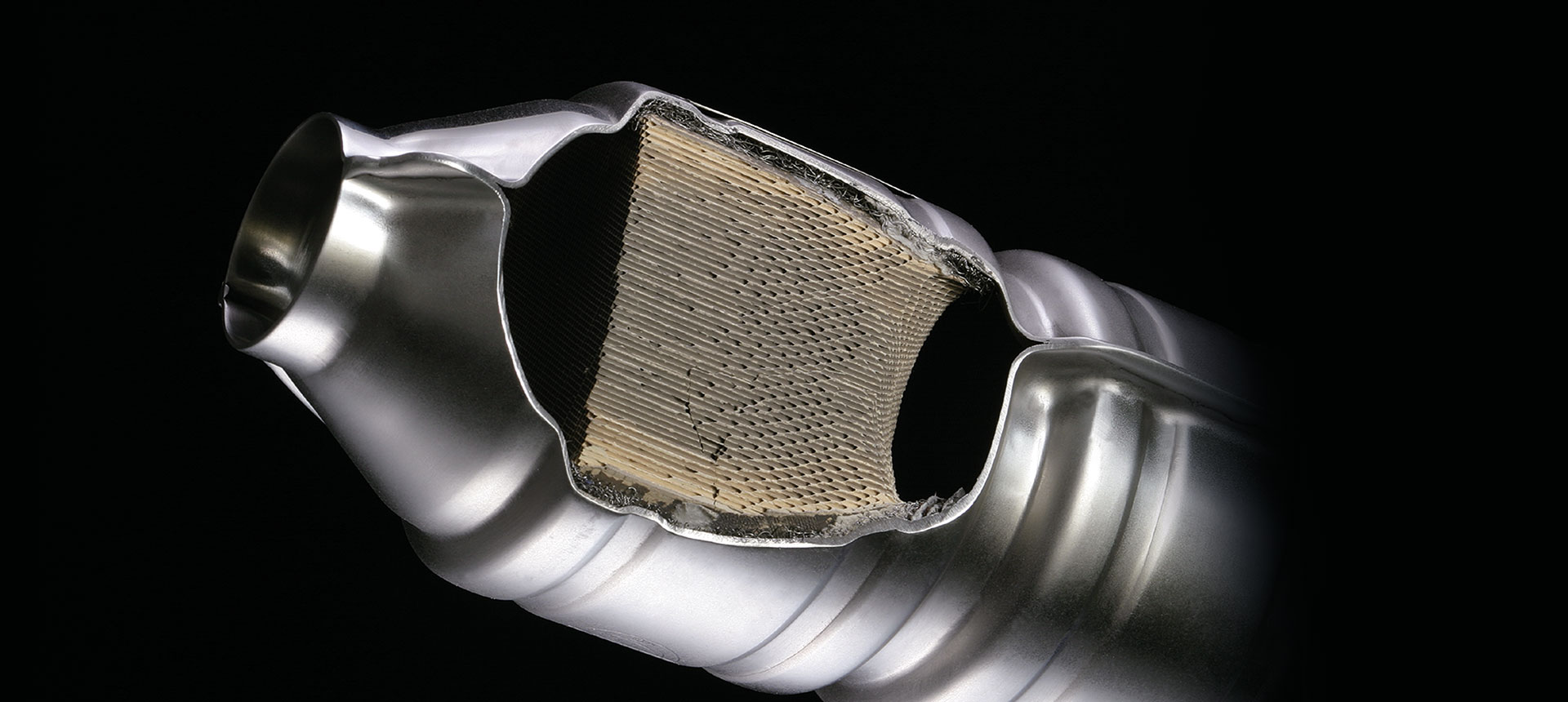Johnson Matthey’s catalytic converters have been helping to improve air quality since 1974. And today, our products are installed in around one third of all new cars on the road, as well as a significant number of heavy duty trucks and buses around the world. With climate change and a growing body of air quality regulations pushing the automotive industry to build cleaner engines, we sat down with Anish Taneja, Chief Executive of Clean Air at Johnson Matthey, to hear more about how the business is transforming to even better serve its customers.
Anish, you have been at JM for just over a year now, can you share your initial reflections?
There are three things that stand out for me – it’s a company with great people, great science and great technology. Everyone is driven by a collective purpose to help our customers catalyse the net zero transition and that comes through in everything we do.
What would you say are the main external factors affecting the Clean Air business?
The automotive industry is going through unprecedented change. The transition towards zero-emission vehicles, with ambitious government targets, comes with supply chain challenges, inflationary pressures and a changing regulatory environment. But the switch to zero-emission vehicles can’t happen overnight, meaning clean and efficient internal combustion engines will have a big role for decades to come. So our role is to ensure we are the lasting partner that our customers can rely on at each step of their journey towards sustainable mobility.
You mentioned regulations, there are a number in Europe, US and elsewhere that will affect the automotive industry – what does that mean for your business?
European emission standards to control air pollution from new motor vehicles, first introduced in 1992, have been regularly updated and tightened over the past thirty years. They have resulted in significant improvements in air quality and have been used as a blueprint for other regions around the world. In fact, I was in India recently talking to the government about their regulations and how our technology can enable cleaner vehicles. The same is true in China, other parts of Asia and the Americas. We’re working very closely with governments and customers around the world to provide technologies that create the cleanest air quality possible.
Some automotive companies have talked about the challenges of scaling up fast enough to meet electrification targets, what’s your take on that?
When you take into consideration the ambitious targets and supply chain challenges, of course there is a high bar. And the automotive companies are doing all they can. But that’s exactly why it’s so important that the cleaner air regulations are brought in as quickly as possible. We need to push on all fronts.
But it’s not just about electrification. In heavy duty, there is more and more interest in hydrogen ICE. A number of OEMs are looking at how they can modify their existing conventional engines to handle high pressure hydrogen. If it requires a small number of changes, then this could be a logical option for a number of markets, including across Asia and Africa. There could also be the possibility of retrofitting current ICE commercial fleets or buses. As we are already a clear leader in heavy duty, we are working with our customers on overcoming the technological challenges - the initial results we’re seeing are very exciting.
Where do you see the growth opportunities for Clean Air?
First of all, in the short term, we are very focussed on improving performance today and really delivering now. We’re recovering inflation, reducing our cost base, and have won a series of new customer contracts.
That means that we are best positioned for the future growth, super focussed on our technologies and our capabilities. In terms of growth industries, our catalysts also reduce emissions from marine and through stationary sources, and we see further potential in adjacent markets, for example in data centres. We refer to it as being ‘with, around and beyond’ our current core market.
There is a lot of talk of transformation at JM, what does that look like for Clean Air?
Every part of JM is on the transformation journey. For Clean Air, we are focussed on delivering on our target of generating at least £4 billion of cash to 2030/31. This is underpinned by tightening emission control legislation, business wins, manufacturing footprint consolidation and other fixed cost reductions. It’s also about behavioural changes, for example sharpening our commercial focus. It’s really important for us how we interact with customers, so we are driving a mindset of creating true partnerships, delivering value across all our technologies. To do this, we’re simplifying our processes, creating faster decision making and incentivising our sales team in a way that hasn’t been done before. I’m confident that these behavioural changes will set us up for success.
What’s next for Clean Air?
As mentioned, we are focussed on delivering on our target of generating at least £4 billion of cash to 2030/31. We are regularly running market scenarios and I am confident that we’re doing all the right things to hit the target. We have the potential, the technical capabilities and the transformation programme to win so I’m excited about the journey ahead!



